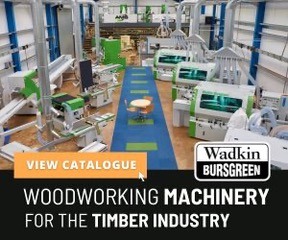Cabinet Vision’s two newly-appointed area managers agree that using computers to design and manufacture furniture which used to be hand crafted, makes woodworking companies more profitable.
One manager used to work with customers throughout the whole of the UK and Irish Republic, but because the customer base is growing rapidly, Cabinet Vision has now split the role, with Harry Hunter looking after the north of England, Scotland and Ireland, and Marc Ward responsible for the Midlands and the South.
For Harry Hunter it is an internal move. He joined the company on the technical support desk, progressing to systems engineer and now area manager. He says his experience of carrying out installations at customers’ premises and giving support via the telephone is ideal for his new role in spending time helping customers get the very best from their software.
“Cabinet Vision is an essential aspect of the UK woodworking industry. I started on the shop floor, and have seen businesses go from using panel saws, hand routers and jigs, to full CNC, which increased output massively. CAD/CAM software gives added precision and makes it much easier to produce custom cabinets and custom assemblies. It’s vital for any woodworking business nowadays.”
He says many companies begin with Cabinet Vision’s design capabilities; then when they invest in CNC routers they upgrade to Screen-to-Machine to instantly transfer NC code from the computer. “But even those who continue with panel saws, hand routers and jigs for shaped pieces, use Cabinet Vision to provide a good base of drawings for the craftsmen. It creates instant cutting lists, which can save some customers days of time.”
Marc Ward agrees that software can carry out the legwork and basic cutting to guarantee consistency and quality, giving craftsmen the opportunity to hand finish if a personal touch is required. “But in terms of getting high volumes through, companies that have a full understanding of their bottom line can see how Cabinet Vision makes a big difference.”
Although his previous role involved providing dust extraction systems, primarily to woodworking companies, he is a qualified designer with a degree in furniture production and design, and spent many years involved with designing and manufacturing a wide range of furniture. He has also worked in the shopfitting industry.
He says Cabinet Vision’s ability to manage everything from design, through drawings and cutlists, to manufacture, cuts out the possibility of errors which can occur when data is transferred from multiple spreadsheets.
“And it also gives manufacturers adaptability. If they’re creating a bespoke product from a core specification they can use parametrics to change things quickly, producing what the customer wants in a tight lead time, at the right price."








